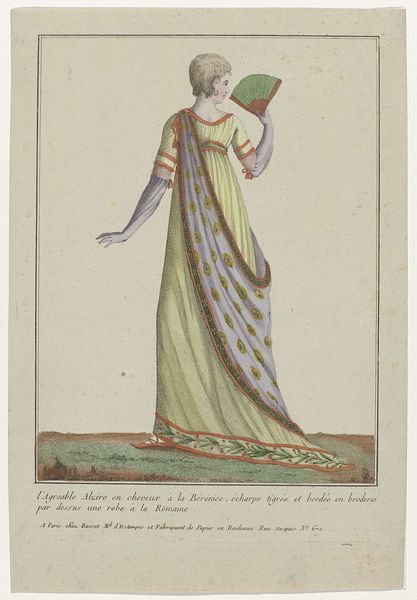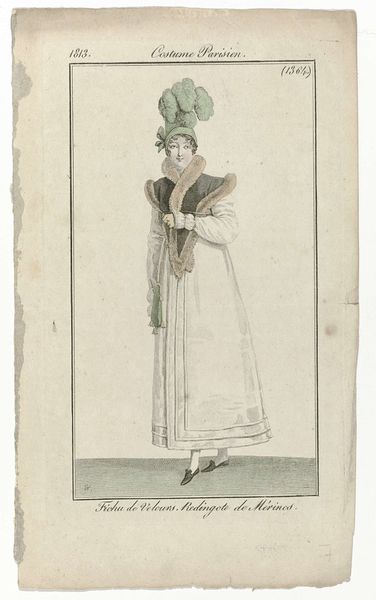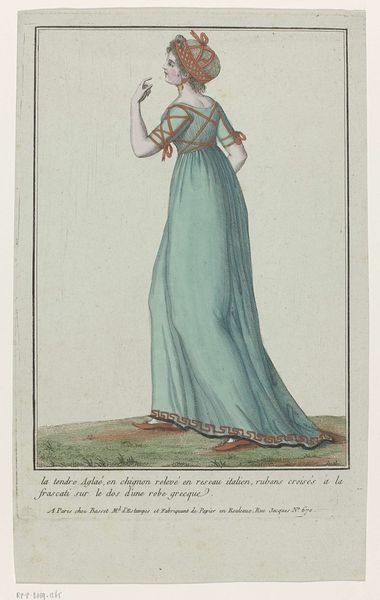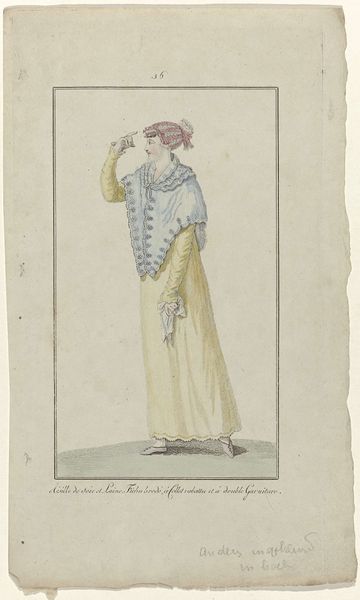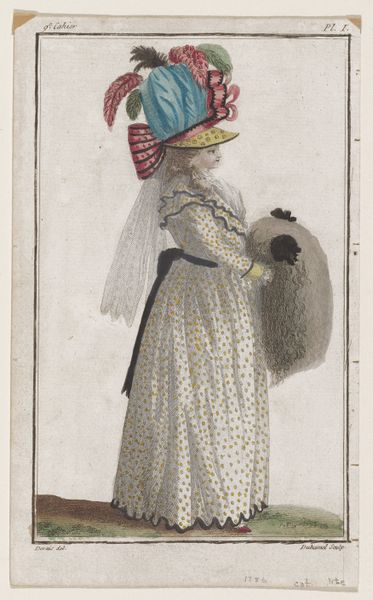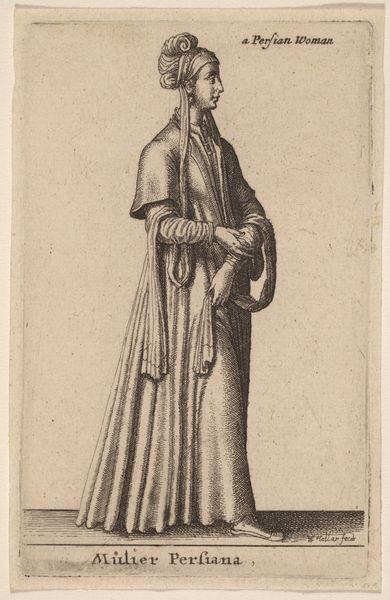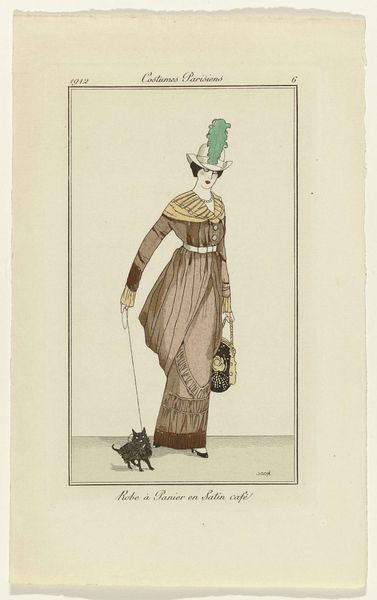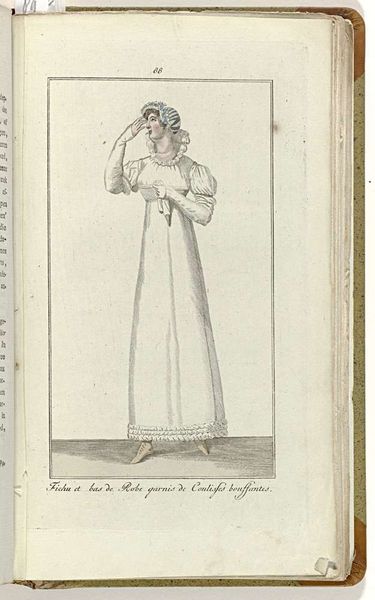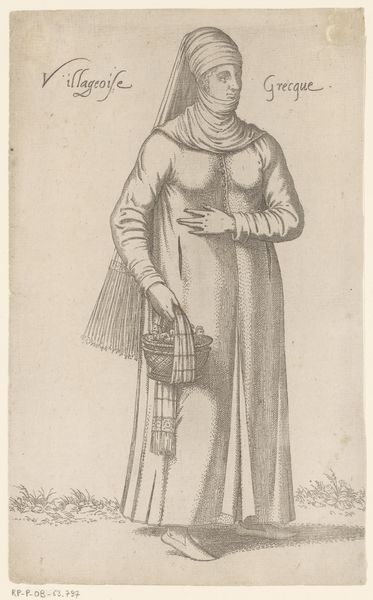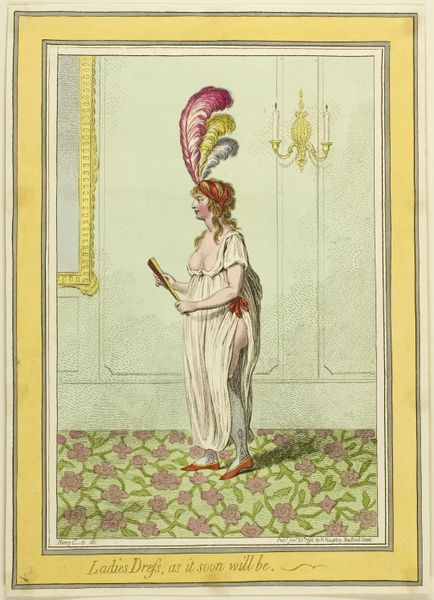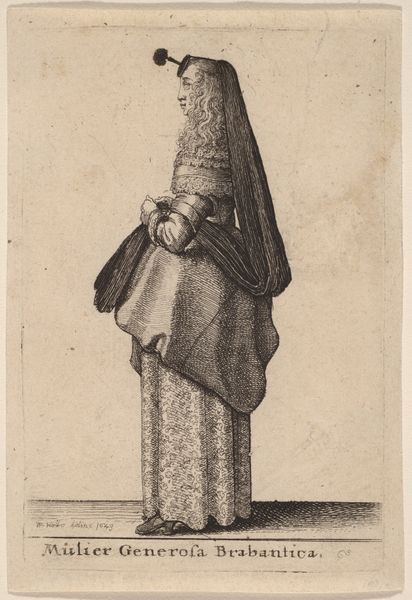
print, etching
#
portrait
# print
#
etching
#
figuration
#
romanticism
#
genre-painting
Copyright: Public Domain
Curator: Here we have a print titled "Fashion Plate," dating from between 1809 and 1811, location courtesy of the Minneapolis Institute of Art. It depicts a woman in fashionable dress. Editor: My first impression is how light and airy the etching feels. The delicate green hues and the flowy fabric give it a certain grace. It almost feels like a watercolor. Curator: Indeed. It is actually an etching. These fashion plates served an important function. They visually communicated the latest trends in clothing to a wide audience, shaping consumer culture and dictating what was deemed fashionable, what materials one had to work with. Editor: So it's more than just a pretty picture. It's about the labor involved in producing the clothes themselves: the weavers, the tailors, and of course, the consumers who were persuaded to buy them. Think about the sheer amount of manual work required to create even one of these outfits, from sourcing the raw materials to the actual sewing. Curator: Absolutely. And note the significance of depicting her in "Kensington Garden Dress," a highly public space associated with social display. These images perpetuated a vision of aristocratic life. It influenced the perception of what femininity was meant to embody, how to conduct oneself. Editor: I see it. The parasol, the light material of the cloak... they all speak to leisure and privilege. This image really reinforces the divisions of labor and the materials needed, not just in the fashion industry but in society more broadly. It is not meant to be timeless. The emphasis is purely on today's, this month's or season's trending materials, processes. Curator: And how trends spread in London. It is not an accident to put a fashion trend within that locality of practice and power. The dress also evokes a certain Neoclassical aesthetic, which of course was closely linked with contemporary notions of Empire, as did its method of print reproduction. Editor: Yes, looking closely at this tells us more about the people and their relationships, what they aspired to. From a materialist perspective, "Fashion Plate" showcases a whole system of creation, labor, and aspiration through these delicate lines. Curator: This seemingly simple fashion plate provides us a fascinating glimpse into the societal values and practices of its time, showcasing both the beauty and the embedded power dynamics that shaped early 19th-century society. Editor: Right. Seeing the focus on artistry combined with materialism in print, it encourages us to consider art's power to shape more than just hemlines.
Comments
No comments
Be the first to comment and join the conversation on the ultimate creative platform.
